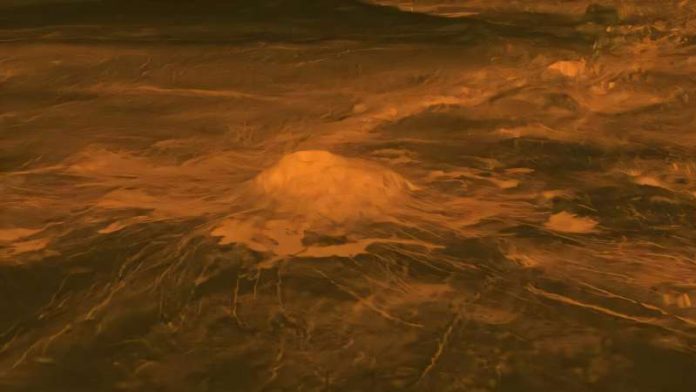
Venus, the second planet from the Sun, is one of the hottest places in the solar system—and it’s covered with volcanoes. Now, scientists think they may have discovered why.
Researchers at Washington University in St. Louis have found new evidence that Venus’s crust might be churning in a surprising way, through a process called convection.
This could explain why Venus has so many volcanoes and other surface features.
The study was led by Professor Slava Solomatov and postdoctoral fellow Chhavi Jain, and their findings were published in Physics of the Earth and Planetary Interiors.
Convection is a natural process where hot material rises while cooler material sinks. On Earth, convection happens deep inside the mantle and powers plate tectonics—the process that moves continents and causes earthquakes.
But Earth’s outer crust is too thin and cool for convection to occur in that layer.
Venus, however, is a different story. Its crust is thicker—anywhere from 30 to 90 kilometers—and its surface is extremely hot, reaching around 870°F (465°C). Solomatov and Jain used new fluid dynamics theories to calculate whether Venus’s crust could support convection, and they found that it probably can.
“This is something no one had really looked into before,” said Solomatov. “But our calculations suggest convection in the crust of Venus is not just possible—it may actually be happening.”
This discovery could be the missing piece of the puzzle. Scientists have long wondered how heat from Venus’s interior rises to the surface, since Venus doesn’t have the same kind of plate tectonics as Earth. Crustal convection could be a key mechanism moving heat upwards and forming volcanoes along the way.
In fact, there’s no shortage of volcanoes on Venus. In 2023, another WashU researcher, Paul Byrne, created a detailed atlas of over 85,000 volcanoes on Venus, using radar data from NASA’s Magellan mission. Now, Solomatov and Byrne are considering teaming up to combine surface images with mathematical models, hoping to learn even more about what’s happening beneath the surface.
Solomatov also hopes that future space missions will send better instruments to Venus. If convection is occurring, parts of the crust should be warmer and less dense than others—differences that could be measured with high-resolution gravity data.
Interestingly, this idea of convection driving surface activity isn’t limited to hot planets like Venus. It’s also happening in a very cold place—Pluto. Images from NASA’s New Horizons mission show large patterns on Pluto’s surface that look like tectonic plates, caused by slow convection in a thick layer of frozen nitrogen.
“Pluto might be the only other place besides Earth where surface tectonics are clearly driven by convection,” Solomatov said. “There’s still so much to learn.”
Source: Washington University in St. Louis.



